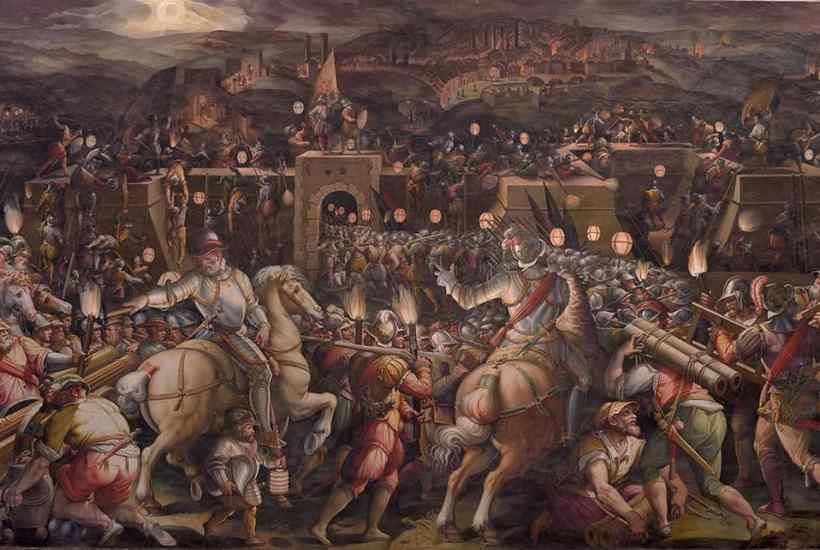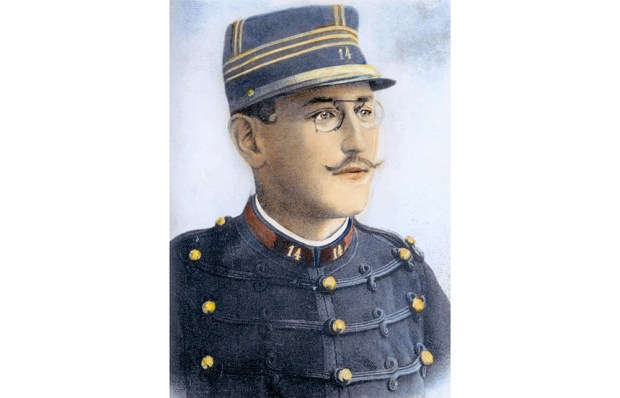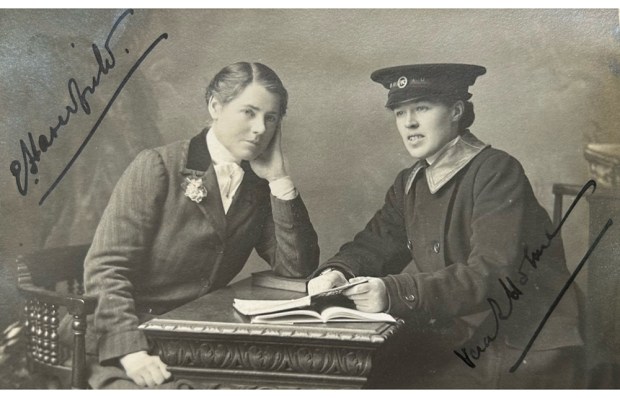Siena, the jewel of Tuscan cities, was the mercantile and banking centre of medieval Europe. Bankers in Pre-Renaissance Siena preened themselves on their wealth and material possession. Banking (from the Italian banco, ‘counter’) is an Italian invention. Yet Dante consigned money-lenders to the seventh circle of Hell, where they are made to stare for eternity at their sacks of lucre. (Emblazoned with fancy coats of arms, the sacks would have held the equivalent of today’s venture capitalist bonus payments.) Usury was a dangerous professional game in Siena, one which invited church censure as well as personal spiritual dereliction.
But without its money-making eminenti, Siena would have remained a provincial backwater, swampy with the threat of malaria. The city’s wealth showed above all in its formidable ring of fortress-like towers, 15 of which still stand. Some 80 of these towers rose over the medieval houses, and were used for offence or defence, when the faction fights raged with neighbouring Florence or among the Sienese banker families. Wealthy citizens lived in such a state of enmity with each other that they chose to inhabit houses at the foot of these fortified torri; like the inhabitants of a high-rise gated community, they looked down on the rest of the population.
In her sumptuously illustrated history of Siena, Jane Stevenson celebrates a proud, hard-working Italian city state, ruled by the church on one side and by bankers, traders and artists on the other. Along the way she considers the work of the Sienese School which flourished between the 14th and 15th centuries under the sway of Duccio, Sassetta, Martini and other artists influenced by Byzantine icon painting. Most Sienese art was in the service of either the church or the Sienese republic; it was a public art of madonnas and imagined biblical landscapes. Privately commissioned family portraiture was rare.
Siena was a republic in name only, though. Families manipulated politics and alliances to extend their power in monarchic fashion. Mercenaries led by the Essex-born freebooter Sir John Hawkwood (immortalised in a Florentine fresco portrait by Paolo Uccello) were the bane of medieval Siena. The feudal stone towers that encircled the hilltop city spoke of violence from foreign condottieri like Hawkwood as well as from more local dark vested interests. All Tuscan towns were faction-ridden, but Siena was perhaps more so than most.
Each year the rivalries came to a head in the horse race pageant known as the Palio, when young bucks and bravos in parti-coloured doublets represented the city’s different districts, or contrade. Swords clashed and racehorses were sometimes maimed purposely. It was a matter of duty for an offended party to avenge an insult or other injury with violence. Revenge was not simply an act of justice in Siena; it was a means of preserving personal honour.
Stevenson, a senior research fellow at Oxford, brings Siena sharply to life with its distinctive striped bell tower, belfries and domes. The Sienese Renaissance may be ‘less obvious’ to visitors today than the city’s medieval past, says Stevenson, but the architectural echoes of the Hellenic world and the Tuscan-Dorian marvels of Antonio Federighi (whose elegant Loggia del Papa was built in the mid 1400s for Pope Pius II) were surely admired by the Renaissance-mad Robert Browning, who visited with his wife Elizabeth Barrett Browning in 1850. Siena before the Renaissance was a city full of ‘offensively vaporous’ cesspits, where sewage drained into a reeking culvert outside the main square. Improvements were first made by its authoritarian Guelf rulers in the 14th century, in the shape of new roads and water systems.
Sometimes it is hard to know what the Guelfs did in Siena, other than fighting. They favoured the pope, it seems, while their arch enemies the Ghibellines favoured the German-based Holy Roman Emperor. The Guelfs were, by and large, the party of the Sienese nouveaux riches: merchant bankers, saffron traders – anyone who supported the republic. Since neither the pope nor the emperor could exert significant control from afar, their rivalry was played out on the streets of Siena. This being Italy, however, Guelfs often squabbled among themselves, and many Ghibellines showed sly Geulfic tendencies. Most Sienese Ghibellines, contrary to the Guelf propaganda that branded them as renegade heretics, acknowledged the spiritual authority of the Holy See and venerated Siena’s most famous saint, Catherine, who died in Rome in 1380, at the age of 33 (the same age as Jesus), having been an ardent would-be crusader against the infidel Turk.
Siena, ‘one of the best-loved cities’ in the world, has found an ideal chronicler in Stevenson, who brings her history up to fascism under Mussolini. Amid the legion betrayals and back-stabbings and the abuse of power and political bribery in Siena down the ages, the city has survived, a uniquely well-preserved Tuscan gem.
Got something to add? Join the discussion and comment below.
Get 10 issues for just $10
Subscribe to The Spectator Australia today for the next 10 magazine issues, plus full online access, for just $10.
You might disagree with half of it, but you’ll enjoy reading all of it. Try your first month for free, then just $2 a week for the remainder of your first year.














Comments
Don't miss out
Join the conversation with other Spectator Australia readers. Subscribe to leave a comment.
SUBSCRIBEAlready a subscriber? Log in